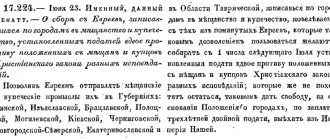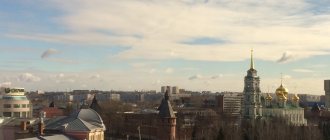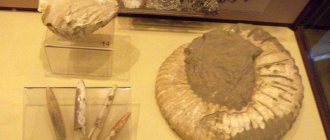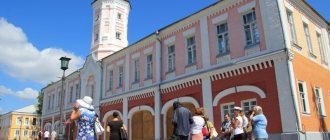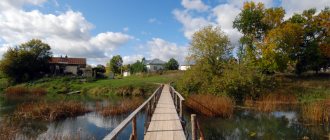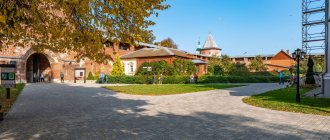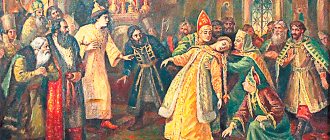History of the museum
The museum was founded in 1919. Initially, it was scientific and artistic; Pavel Ivanovich Truntaev was appointed as the first director. At that time there were two departments: natural history and art. In the first, collections of zoology, geology and botany were presented. In the second, they collected works of art from local estates - paintings, art glass, tapestries, beads and much more. Currently, the museum is a branch of the Ivanovo Regional Art Museum1.
The museum has two permanent exhibitions. The first, an art room in an ancient building on Komsomolskaya Street; the second, historical one - on Lenin Street, building 2.
Fire Museum
Address: Kineshma, st. Ostrovsky, 4
Telephone:
8(49331)5-55-20 The Kineshma Fire Museum is located at the base of the 13th fire and rescue unit on Ostrovsky Street. It is worth noting that local firefighters had been nurturing the idea of creating a fire museum for several years. Already in 2014, a fire pump, which was used to extinguish fires at the beginning of the 20th century, as well as a fire monitor, appeared next to the rescue unit. In 2020, the fire museum received new development. On October 8, 2020, a corresponding exhibition opened in the fire and rescue department building. The museum's exposition presents many exhibits related to the history of the fire department of the city and region. These are firefighter combat clothing, helmets, fire-fighting equipment, fire extinguishers, a fire department communications console with direct lines to services and city facilities, a radio station for communication between fire departments, dosimeters, and an exposure meter for calculating forces and resources during a fire. Here you can see breathing apparatus, starting with the closed-type oxygen-isolating apparatus KIP 7 and ending with the AN Omega open-type compressed air apparatus and much more. The stands display the history of the fire department, the leadership of the unit, photographs of employees awarded medals for courage and for emergency response.
Visiting the museum is possible for school groups upon prior request.
Exposition
Among the artists whose works are presented in the museum are such outstanding painters as Savitsky, Kiselev, Vinogradov, Aivazovsky and Korovin. The sculpture is represented by the names of F. Chopin and P. Klodt von Jurgensburg, as well as many local masters. It is also worth noting the excellent collection of porcelain from the largest Russian and European manufactories: the Imperial Porcelain Factory, the M.S. Kuznetsov Partnership, the German Porcelain Factory in Thuringia, the Copenhagen, Vienna, Meissen manufactories, private factories of F. Gardner, A. Kiselev, A. Popov . There is also a large collection of antique furniture.
The historical exhibition is presented with materials on the history of the region, its nature - geology, animals, plants.
A self-taught artist exhibits at the Kineshma Museum
“Aviator”, “Volga Worker”, “At the End of the World”. Motifs of Van Gogh and Bruegel in the Kineshma Museum. The exhibition of Alexander Nechaev, a self-taught artist known in the Internet community under the pseudonym Niggle, opened for the first time in the master’s small homeland. More details in the report. Skip
Alexander Nechaev took up painting seriously about 20 years ago. He is from Navolok, now lives and works in Moscow. His works were exhibited in Torzhok, he participated in the Moscow vernissage at Manezh, dedicated to the 50th anniversary of the Golden Ring of Russia tourist route.
The artist’s self-portrait entitled “Favorite pastime: Lord, how good it feels to lie down” is exhibited at almost all major exhibitions. As the master jokes, to show as much as possible.
Ivanovo residents became acquainted with the artist’s work last year; his works were shown in the former Palace of Culture for railway workers. Fellow countrymen - residents of Kineshma and residents of Navolok - see them for the first time. And they evaluate it completely differently.
Igor Lebedev, deputy. Director for Science of the Kineshma Art and History Museum:
“These are the corners of Navolok, Kineshma, our Volga, various rivers, temples that we see, that is, landscapes familiar from childhood that evoke the joy of recognition, but at the same time a certain aching longing for the past.”
The pictures about the small Motherland are quite depressing, but the author quotes Pelevin: “I am a patriot, I love our cruel, unfair society, living in permafrost conditions.” The title “At the End of the World” was given to the exhibition by one of the works in this series.
Igor Lebedev, deputy. Director for Science of the Kineshma Art and History Museum:
“This does not mean that Navoloki is the end of the world, although that is also the case. For Nechaev, Navoloki is the place where everything begins and where everything ends. The fact is that the edge of the world for Nechaev is not a geographical or socially derogatory concept, no at all, it is a kind of border between light and darkness.”
Many people recognize their childhood in the work “Aviator”. In the still life with the newspaper “Privolzhsky Rabochiy” there is also hope for the best. According to Nechaev, the capital of Russia is not much different in mood from the province; among the faceless crowd, loneliness is felt even more piercingly. The series of paintings “Friends” is dedicated to this feeling.
Igor Lebedev, deputy. Director for Science of the Kineshma Art and History Museum:
“This is an artist of loneliness, but not depressive, hopeless loneliness, but rather a light sadness for what could have been or for what has passed. Still, there is always room for some hope and for some way out through the attic, that is, for some bright way out.”
Some works are associated with paintings by great masters - Van Gogh, Bruegel. Nechaev admitted more than once that his teachers were artists, musicians, writers and poets. For example, this series illustrates Paustovsky’s story “Rainy Dawn,” which takes place in Navoloki.
Marina Zenina, Vladimir Khmelev, television
Tickets and opening hours
A visit to the museum for an adult will cost 100 rubles, for students and pensioners 80 rubles, and for schoolchildren only 30 rubles. You can book a tour at the museum for an additional fee. Children under 7 years old can visit for free.
The museum is open from Tuesday to Sunday from 10:00 to 18:00, closed on Monday. The ticket offices close half an hour before closing.
The felt boots museum was opened several years ago by the Sokolov family. The family loved and wore felt boots. And to make the shoes truly unique, they embroidered and decorated them. Over time, there were so many felt boots that I had to give them a special room. Friends and family acquaintances began to come to admire the painted felt boots. This is how the private collection turned into a real museum. After some time, it was decided to move the museum to the center of the city of Kineshma and open it to everyone who wants to join the culture of felt boots.
Nowadays the museum is located on the first floor of a merchant's house at the address: st. Frunze, 6. Entrance from the end; we didn’t look for it for long, but we still looked for it, wandered along the windows.
The cost of visiting is 100 rubles.
The cash desk, also known as a souvenir shop, is located in a small dressing room. Here you can buy tickets, souvenirs, and get felt boots.
We were a little late for the start of the excursion, but they promised to repeat the start after completion.
In general, felt boots are a very interesting and unique type of footwear. They are made from sheep wool. First, a kind of sock is formed from combed wool, which is several times larger than the future felt boot. Then this sock is felted so that the hairs are held together. In the process, the size of the sock becomes closer to the size of the future shoes.
Finally, a collapsible wooden block is inserted into the felt boot to give it its final shape. Why collapsible? But in the process of forming the felt boots become even smaller, and the block will need to be removed. It would be impossible to remove the whole mold!
One block is used for both the right and left felt boots. Only then, during the process of wearing, the felt boots take the shape of the owner’s foot, becoming right and left.
The museum is famous primarily for the fact that in addition to painted and embroidered felt boots, there is a giant felt boot , listed in the Guinness Book of Records. The height of this felt boot is 168 cm (he is even taller than me), and the length of the foot is 110 cm.
A larger felt boot rises nearby. It was not for nothing that the craftsmen of the Sokolov family made it. After registering the record, Yaroslavl masters decided to break Kineshma’s record - they presented their felt boots. This is where the idea arose to make another one - bigger and higher. But in the process of registering the record, it turned out that the Yaroslavl people cheated and did not make the felt boots using classical technology. And this means that the championship remains with little Kineshma. So the fellow record holder is still standing and waiting for his turn, because there is no need to break his own record.
But in addition to the largest felt boots, the museum also houses the smallest ones.
The largest room displays a wide variety of felt boots. And glamorous ones with beads, and bright painted ones, and even felt boots for a mermaid!
Another small room displays an exhibition of old accordions.
And on the walls there are photographs covering the stages of making that very large felt boot from the next room.
In general, the entire collection of felt boots is impressive, because we are used to seeing standard footwear, and even then not in all areas. Although lately felt boots have become increasingly in demand.
In a small room at the entrance you can see the very equipment and tools that help create these felted products.
There was also some humor.
So if you’re in Kineshma, be sure to visit the small but warm museum of Russian felt boots .
Helpful information
Address: Kineshma, st. Frunze, 6
Opening hours: for January 2021 - Mon-Sun. 11:00-16:00
Cost: adult - 100 rub.
Phone: +7 +7(915) 819-23-21
Website: kinvalenok.umi.ru
Similar articles:
- 08/13/2017 — Museums of the city of Myshkin
- 08/20/2017 — Walk through summer Kineshma
© Website “Across Russia by car” https://bycarinrussia.ru. Copying text and photos only with the permission of the author. All rights reserved.
Similar articles:
- 08/13/2017 — Museums of the city of Myshkin
- 08/20/2017 — Walk through summer Kineshma
